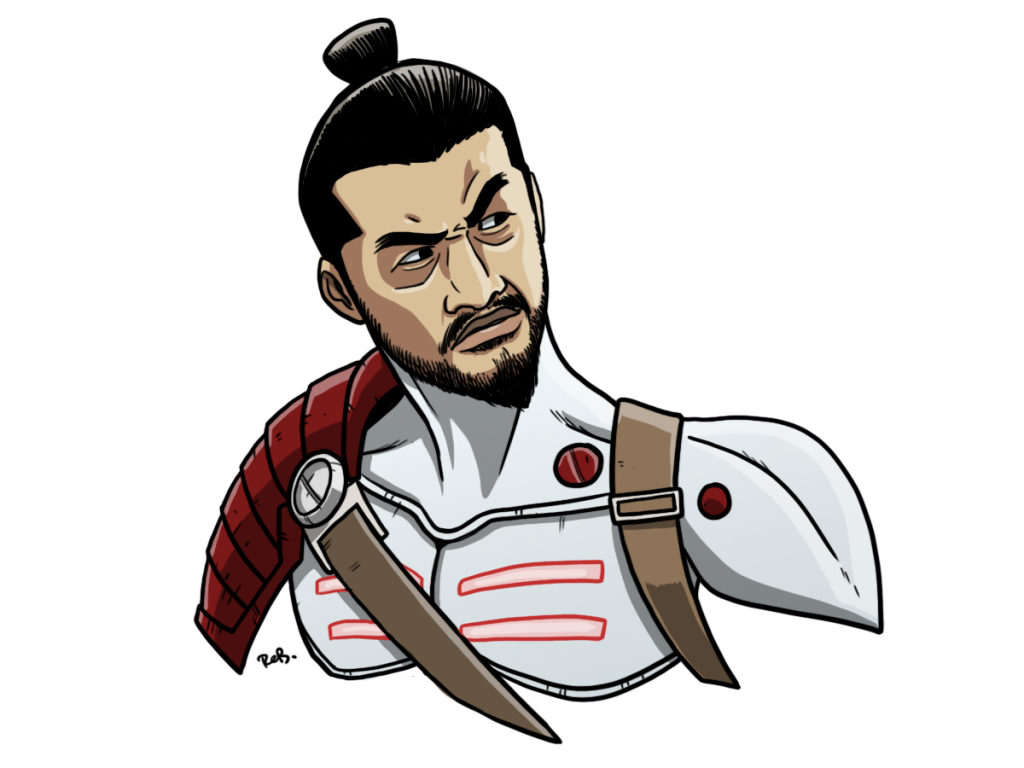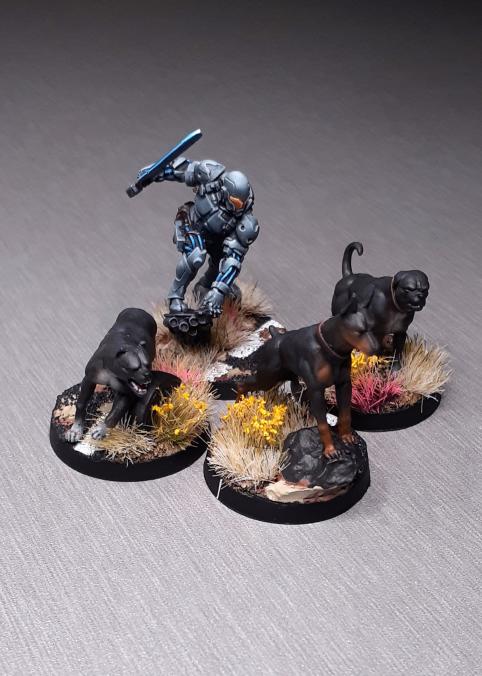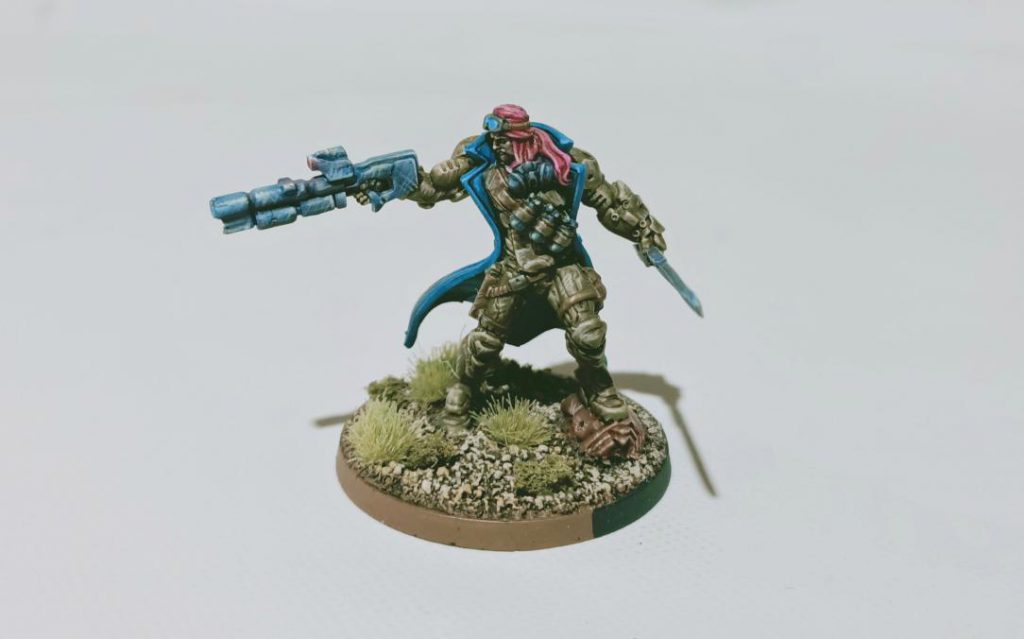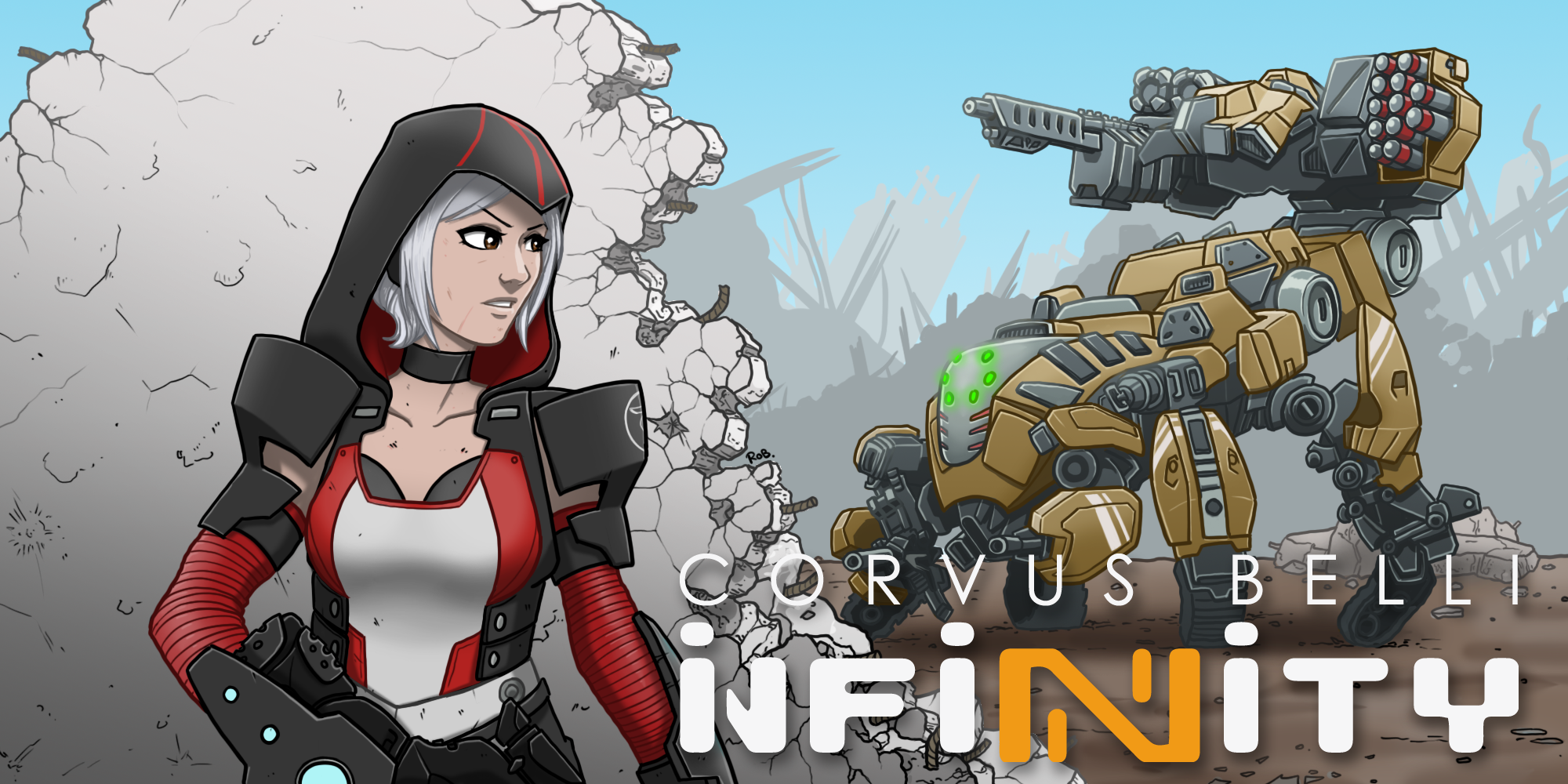I recently received another great mailbag question whose response merited writing a full article:
Close combat seems a bit all or nothing – when is engaging in close combat a better idea than sticking to ranged combat?
Infinity is a game about managed risk. Things always have a chance of going wrong so the game is about only taking controlled risks – and no risk is more controlled than a close combat expert against a regular guy. Going by old N3 math (the calculator isn’t updated for N4 yet, but it’s not dramatically different), a CC23 Martial Arts 3 (now MA2) double-action close-combat weapon vs a CC13 fusilier has an eighty-eight percent chance of killing the fusilier instantly and only a three percent chance of taking a wound in exchange.
This is because the Infinity dice system goes wild with numbers over 20. CC 26 is essentially a +6 modifier to your dice roll, meaning you land a critical hit on any number over 14 and you can’t roll lower than a 7. More Burst generally means a more reliable outcome, but even though CC attacks are Burst 1 numbers like that are ludicrously reliable. For your CC13 (down to 10 from your martial arts) opponent to win that fight you need to roll a one or two and they need to roll an 8, 9, or 10 – a vanishingly tiny range of the possibility space.
The takeaway is that when you can manage a close combat attack with a martial arts expert then it’s as close to a guaranteed result as you can possibly get.
Musashi’s Sword Manual

Every faction in the game will have access to some sort of dedicated close-combat model. This is a specific balance feature – ITS Season 11 has a number of missions that require CC experts to attack hard targets, such as Mindwipe, so not only will you have access to a kung fu expert but you’ll have pressure to put one in your list. Here are the common types of close-combat specialists so you can assess what the profile is telling you.
Apprentice
The magic number for close combat stats is CC22 Martial Arts 2. That’s the point where you really start hitting the guaranteed results – anything below that is wildly swingy and nowhere near as guaranteed. Normally a stat line in this range is a death sentence for a model – it’s just enough close combat ability to make a model extremely expensive while not enough to get the kind of ludicrous guaranteed results that actual close combat abilities get you. This is the reason things like the PanOceanian Locust are terrible – they’re paying a premium for just enough close combat ability to embarrass themselves.
There are, however, a couple of extremely dramatic exceptions to this.
A variety of warbeasts such as the Combined Army Gakis and Taighas make a mean showing off CC20 due to their Berserk special rule. This lets them suicide-punch opponents regardless of their close combat ability. Similarly, Tohaa Symbiobeasts, often seen attached to Kerail Preceptors, are extreme close combat threats because they are synchronized – several of them can move into close combat with a single activation and whichever one you choose not to ARO is the one that bites you. Another special mention goes to Yu Jing’s Kanren, who make up for their disappointing close combat profile with surprise attack and a monofiliament CCW, making them surprisingly decent TAG assassins.
In general, though, mediocre CC stats are a way to inflate the price of a model without giving it the serious ability to defend itself.
Master
The magic number of CC22+Martial Arts 2 renders a huge swathe of Infinity’s CC models at this level. This is the level where your CC specialist can reasonably fight anything that’s not a CC specialist and expect a decisive win. There are marginal differences around the edges in this category but they’re generally not relevant – CC21 Martial Arts 2 isn’t hugely different from CC24 Martial Arts 4 in terms of capability and expected results. At this level there are only two differentiation points: Weapon type and delivery mechanism.
Weapon Type you’re looking for, first and foremost, double action, explosive, or D-Charge CCWs. This is because these weapon profiles have the coveted Anti-Materiel tag which is extremely relevant for a number of missions where you need to destroy structures – and monofiliament CCWs do not count. Secondarily, you’re looking for Monofiliament and E/M CCWs because these are just fantastic ammunition types in general. A monofiliament CCW puts targets straight to dead, bypassing any armour or remaining wounds, while an E/M CCW forces two saving throws that inflict wounds and isolated and immobilized to heavy infantry. Next is AP CCWs that are relevant for fighting TAGs, and Shock if you can’t get anything else.
The other thing you’re looking for in a profile at this level is a way to deliver the model to your opponent. Smoke Grenades are the ideal – see my article on Smoke for how a model with these grenades can cross a huge amount of territory to force an engagement – but the fast speeds of a Montessa Knight on a motorcycle or things like Liang Kai’s forward deployment, impetuous order, and super-jump are great ways to get these models into your enemy’s face.
Monster
There aren’t many of these profiles in the game but, like the difference between Category 2 and Category 3 hackers in last week’s issue, these guys are fighting on an entirely different level from everyone else. The key thing that grants this status is the Natural Born Warrior rule combined with martial arts – Senior Massacre is one of the best CC combatants in the game purely because this combination puts him 6 points up over any martial arts experts who try to engage him directly. It’s also possible to make this grade with raw stats, but only Musashi with his MA5 really pulls it off. Special consideration goes to Tohaa’s Makauls who inflict -3CC to their opponent while moving in triads which allow them to bring their own gang up bonuses, which is +1 Burst on a critical CC attack, and to the Nomad Uberfalk Commandos who at CC24 MA2 Natural Born Warriors, who impose a -3 to their opponent and can gang up on their opponents with multiple pupniks – they will kill literally anything they touch and it won’t even be close. The official models for these guys are a bit naff, but a friend of mine did a really cool conversion using actual doggo miniatures in place.

Finally, something not obvious is that Sheshkiin can swing her D-Charges and absorb Protheon wounds off each point of damage dealt. On the topic of D-Charges, the Ariadnian SAS are extremely deadly close combat combatants due to having D-Charges and a marker state, giving them a close combat threat range of twelve inches.
A Sword Is Not Your Lover
Some factions will use CC as defense or spice. Just having a Master or two speckled around is an entirely reasonable defense against other CC Masters because any fight between them will be a straight up coinflip. You’ll still get destroyed by CC monsters but they’re few and far between. Some factions will want to use them more aggressively – and some will want to base their entire gameplan around them. This section will discuss techniques for getting in close.
The Japanese Sectorial Army is a newbie trap faction. It is gorgeous models and cool aesthetic concealing an army that relies close combat, and close combat offensives are very difficult to pull off. However they, along with Military Orders, have access to a technique called the Death Charge. That’s where you get a HI link of five cheap CC masters – Tanko for JSA, Magister Knights for MO – and just run them across the table in plain view of the enemy’s overwatch. These models have low-burst, high-damage weapons like Flammenspears or Panzerfausts which present such a serious threat that your opponent can’t ignore the spearhead model to safely take unopposed shots at the exposed link. They can either engage you face-to-face or engage in a mutual suicide – something that you’ll be pretty comfortable with given these charging models cost 20 points and have good wounds and armour. Similar techniques can be done with co-ordinated orders – and in extremis, a co-ordinated volley with pistols can do a surprising amount of damage.
Be aware that when you make this play you are betting that they can’t shoot all of you, so try to ensure they cannot, in fact, shoot all of you. This means template weapons usually, so you’re taking your life in your hands if you’re stepping out into the open vs a Combined Army player who might have a concealed Noctifier.
There is of course smoke – the traditional way to not get shot on your way to stab your opponents. Throwing down smoke means that you can control the line of sight against your models. It’s order intensive to cross the entire board this way but it can make a fantastic way to clear the last few inches or penetrate a densely packed room like in scenarios The Armory or Panic Room.
Marker States are a great way to get close to an isolated enemy overwatch element. Advance the marker state and they can either discover – in which case you can fire a shot of opportunity with whatever sidearm you have – or hold, in which case you can just keep moving. An unsupported enemy overwatch piece is easy prey for a camouflage token. A great technique if you can manage it is to move-move right past an enemy model, and then turn around and walk into their rear arc.
Berserk lets you move twice and then perform a CC attack in a single order. This can give an 8+ inch threat range from your starting position, but this means starting the order with LOS and from within chain rifle range. It requires a lot more setup to manage than you’d think, so I’d advise against relying on berserk charges as a primary delivery mechanism.
Terrain, corners, and walls are deeply unreliable. You will almost never find an opportunity to get into close combat just off the back of the table’s terrain with no special assistance, it’s hardly worth even planing for. A model like Shona Carano in NCA might have a really good profile for a close combat specialist but without smoke or any other sort of delivery mechanism she’ll almost never make it into engagement with any enemy models. Even in the rare situation where it can be done you’ll almost certainly be crossing the line of fire of another enemy model to pull it off, likely getting her hit by a template weapon of some kind.
Dodging is a mixed bag for projecting close-combat threat. Firstly, the old Dodge-Engage from N3 is utterly dead. When an enemy model activates in your zone of control and you declare a dodge ARO if they want they can choose to keep moving, putting themselves outside the area threatened by your dodge. Practically, this means it is impossible to enter close combat in reactive turn against someone who does not want to let it happen. However, a close combat model with good dodge skills can cross a surprising amount of distance with reactive dodges, setting you up for strong active turn plays. Be aware that if it is your active turn and you move and dodge into close combat with an opponent for the extra range, and they declare dodge as their own ARO, your dodge movement resolves first. This means you dodge into close combat and they immediately dodge right out of it. For this reason you’re not actually threatening them with close combat unless you’re a single move increment away.
There is a complicated little technique you can use to squeeze an extra few inches of safe movement out of your models, though. See, while it’s tradition to declare orders in the sequence move>short skill you can actually do the opposite and declare short skill>move. This means you can start your activation and declare dodge – and then suddenly everything in zone of control has a valid dodge ARO which they must take or forfeit their ARO entirely. Then for the second half of the order you move. The dodge movement resolves at the end of the activation so you dodge from the position you ended your turn at. As per before, the enemy’s dodge will resolve after yours does meaning this won’t reliably get you into close combat alone, but it can help a lot at positioning you within that critical move+cc attack threat range. Particularly great for setting up Berserk charges!
(Important note! If you do this, then your opponent’s dodge won’t be taking the -3 penalty for being a zone of control dodge, because they’ll have line of sight to you when the order resolves)
There is also the ‘Naruto Run’ technique – when you have a model with 6/2 movement and a dodge range of greater than 2 (such as a Zhanshi which dodges 3 inches), you can move 6 and dodge, giving you a decent chance of adding a few extra inches onto your movement. Most of the time this is needlessly risky for a minimal result but sometimes a game can hinge on it.
The Hacking Close Combat Specialist offers a way around this. When a hacker is closing on the enemy inside zone of control but outside of line of fire then they fork the enemy’s ARO – the enemy can either declare dodge, to keep them safe from being engaged in close combat, or reset, to keep them safe from being hacked. Then you can hit them with whichever option they didn’t pick. While a light infantryman alone might not fear your hacker, if you happen to have a guided missile bot backfield that can splash a Spotlighted target then you can put serious teeth behind that threat. Tohaa biohacking is essentially a boarding shotgun that goes through walls and comes in the same link team as a guy with eclipse smoke and extreme close combat abilities, so, uh, watch out for those guys.
Stealth is a much more rare rule than it used to be, but it can very neatly render this whole discussion moot by simply removing zone of control dodges as an option.
Finally, take refuge in engagement. It is extremely valid to move a model into close combat with an enemy piece and then just end your turn, leaving that whole mess as their problem. Anyone firing into close combat takes a -6 penalty and all misses hit their ally, so this can be a way to burn your enemy’s orders and kill their critical model at the same time. Be cautious – if they have a CC specialist of their own they can walk it into the melee and take advantage of gang-up bonuses to execute your model very reliably.
Consider: There Is No Such Thing As A Sword

Close combat is very binary, and if you see a martial arts expert come at your TAG things are looking pretty grim. However, new edition has given the opportunity to for counterplay.
One of the most critical N4 rules for close combat, both to wield and to oppose, is the dodge ARO. Martial Arts now doesn’t come with stealth so there’s actual counterplay to smoke grenade offensives now. Whenever a model moves in your ZOC without Stealth you can dodge, and you should do that during a CC attack to pull back as far as possible during every step of their advance. This alone can delay your opponent for a critical order or two, force them to cross the sight lines of multiple models, or just set them up to be hit with a chain rifle. Even a fusilier dodges in zone of control a third of the time, so always be dodging against CC threats.
Alternatively, if you have your own CC specialist you can try to dodge them into engagement with an enemy model, especially if they’ve got +dodge range skills. This is at its best if you can manage it around a corner into a model that doesn’t see you until the dodge move resolves at the end of the action, but it can also allow you to reposition a CC expert that’s a part of an aggressive core link to defend the more vulnerable members of the team. You may also want to have the non-CC experts dodge into CC along with the CC expert, relying on the increased Burst from gang-up bonuses to guarantee you take down the enemy attacker. You’ve got the advantage in reactive because you get to place your model after they place theirs.
Template weapons, from flamethrowers to boarding shotguns, are a background issue close combat armies have to deal with. Many valuable models come with one of these as a sidearm which can be a great asset for complicating a CC offensive – though be aware these are only ever deterrents and any CC army will have planned a way around them.
Hacking also presents the opportunity to shut down heavy infantry CC attacks at least – the CC player will be working to deny you vision so having a defense that doesn’t rely on vision is great. Mines and other deployables are often great deterrents – CC specialists often have good phys for dodging through these defenses but many of them are fragile one-wound warbands without great armour and they only need to get unlucky once.
Positioning, of course, matters hugely – the difference made by having a sacrificial warcor up on a ledge can be immense in how many impetuous orders it can deny. If you’re up against an army that is all-out on close combat then it can be worth positioning for AROs you wouldn’t normally take. Even a combi rifle in a bad rangeband is still a threat to a dog warrior leaping across a tall building. It’s a really tricky thing to know when you should flip the switch and start totally disregarding cover, instead playing with consideration to close combat and template weapons, but if you make the transition at the right time you can shatter an otherwise strong play.
That wraps up this week’s look at close combat. Next week we’ll take a look at the game as a whole and some thoughts around where it’s going. In the meantime, if you have any questions or feedback, drop us a note in the comments below or email us at contact@goonhammer.com.


